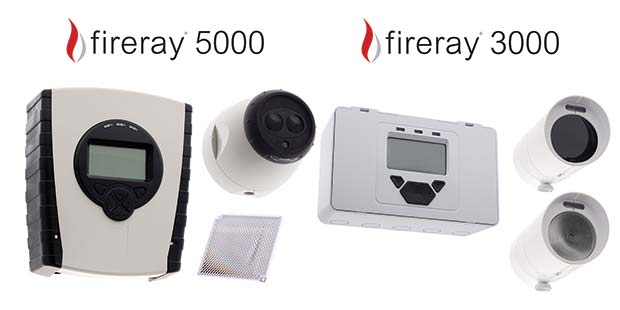Beam smoke detectors provide are used to protect large interiors, such as warehouses, shopping centres or other large internal spaces. They offer discreet and cost effective fire detection. Beam detectors are ideally suited for installations at height or with high ceilings. They cover large areas at minimal cost.

Unrealised potential
The substantial benefits of using beam smoke detectors have however been offset by difficulty in achieving good alignment of the light beam.
Traditional designs (using hand alignment etc.) have made alignment difficult in the past.
Recent improvements in beam alignment technology have now made alignment of a beam detector rapid and simple to achieve.
Low-level controller
Whilst not available for all beam detectors on the market, a low-level controller adds significant user benefit to alignment and ease of use. The controller allows the user to see the status of the unit, as well as checking that the apparatus is error free (both at installation and when maintaining the device).
Laser Alignment
One of the key developments for beam detection installation is the addition of an internal laser. Whilst the main unit operates on an IR light source, the addition of a visible laser allows the user to position the detector head onto the right target. They also play a major role in faultfinding.
Motorisation
The most powerful alignment tool available on the beam market today is motorisation. A fully motorised beam detector gives the user three powerful benefits.
• Automatic alignment
• Low-level movement
• Movement compensation
Automatic alignment
A motor allows a beam detector to be automatically aligned, increasing speed and convenience of installation, as well as reducing the potential for user error. It is especially useful when combined with a low-level controller, allowing for commissioning of a beam detector from the ground, saving on high-level access through a ladder/cherry picker etc.
Low-level movement control
Low-level movement control. The ability to align a unit without using a ladder, or maintain it easily, is one of the biggest benefits of using a controller. Motorisation combined with a low-level controller creates a strong system.
Movement compensation
The motor, once aligned onto a reflector can be kept scanning to ensure its alignment is correct. This allows the motor to correct alignment once installed if the unit is knocked, or should the building move.
Bringing it all together
All of these technologies, whilst individually powerful, fully unlock their potential when combined with each other. Motorisation is the ultimate technology enabler for ease and speed of alignment, optimising all other technologies.
Author
Dr. Daniel Waldron, Product Manager at FFE Ltd.
Tel: 01462 444 740
Email: sales@ffeuk.com




Comments are closed.